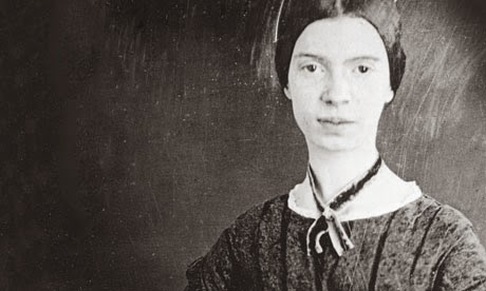For the younger students, the emphasis is on close reading. I usually ask questions such as the following:
Warm up questions:
- I'll ask them which poem they want to start with, out of the 3-5 that we read for that day. Why did you want to start with this poem? Why does it strike you as interesting.
- What are interesting features that you notice about the poem, such as diction, syntax, punctuation, capitalization, etc.
- Do you see a turning point or a volta in this poem (often indicated by a conjunction like "yet" or "but")? What kind of "thesis" or argument does the speaker make before the volta, and does the speaker amplify, qualify, contradict, or otherwise nuance this claim after the volta?
- We go over the parts of a metaphor according to I.A. Richards: the vehicle (what bestows meaning) and the tenor (what receives meaning). Remember that a metaphor (or an implicit metaphor) is a type of argument. What does it mean to say that "my life" is "a loaded gun," for example? What are the qualities of the vehicle (here, "gun") that are transferred over to the tenor (here, "life")?
Those are my general strategies, and from there I will add additional questions based on the content of the poem.
For the older students, the emphasis is on learning some major trends in Dickinson criticism alongside close reading. We spend four class periods on Dickinson, and the theme of each class is as follows:
Day one: Text as performance (manuscript studies) and religious antinomianism.
We read the following poems to discuss this topic: 1 (Valentine week), 258 (There's a certain Slant of light), 712 (Because I could not stop for Death), 632 (The Brain—is wider than the Sky), and 1651 (A Word made Flesh is seldom). Then, one my students presents the article below, according to the requirements of the homework presentation assignment.
Gilliland, Don. “Textual Scruples and Dickinson's 'Uncertain Certainty.'” The Emily Dickinson Journal 18.2 (2009): 38-62.
Day two: Mourning and eroticism
We read the following poems to discuss this topic: 341 (After great pain, a formal feeling comes), 216 (Safe in their Alabaster Chambers), and 640 (I cannot live with You). Again, a student then takes the reins to present the following critical article:
Diehl, Johanna. “The Poetics of Loss: Erotic Melancholia in Agamben and Dickinson.” American Imago 66.3 (2009): 369-381.
Day three: Madness and/or oppression
We read the following poems to discuss this topic: 280 (I felt a Funeral, in my Brain), 465 (I heard a Fly buzz – when I died), and 670 (One need not be a Chamber – to be Haunted). There usually isn't much need to assign a critical article for that. They almost always have a lot to say about the poems on their own, especially "I felt a Funeral, in my Brain."
Day four: The Civil War
To my mind, this is an invaluable addition to any discussion of Emily Dickinson. Students tend to have a lot of preconceived notions about her as a half-mad hermit, and a reclusive shut-in; however, she was actively engaged in the world around her, even if she did not leave her home very frequently. Putting her poetry in context with the historical moment in which she was writing is a great way to challenge notions that students have about 1) the boundaries between public and private speech, and 2) the way that women reacted to and engaged with the topic of war.
We read 754 (My Life had stood, a Loaded Gun), 1732 (My life closed twice before its close), and 518 (When I was small, a Woman died). The last one in particular is associated with Dickinson's "war poetry." To this end, one of my students presents on the following article:
Friedlander, Benjamin. “Emily Dickinson and the Battle of Ball's Bluff.” Publications of the Modern Language Association of America 124.5 (2009): 1582-1599.

 RSS Feed
RSS Feed